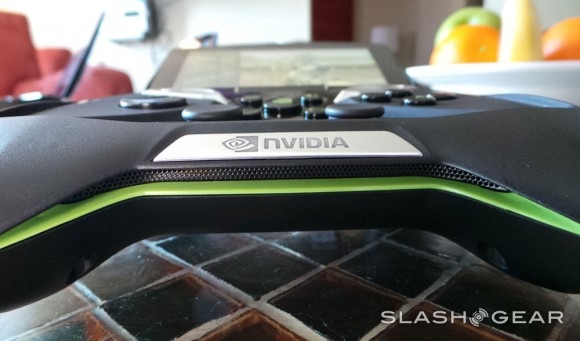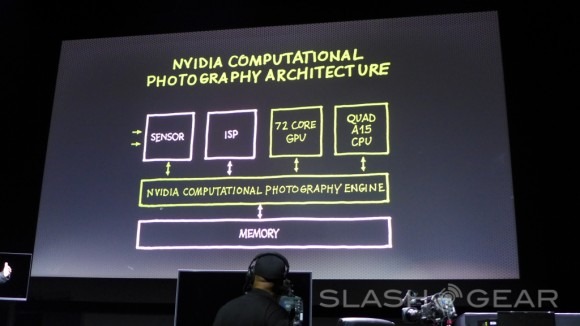SlashGear 101: NVIDIA Tegra 4 In Detail
At CES 2013 we saw the unveiling of the NVIDIA Tegra 4, a mobile processor the company suggested was the World's Fastest, it containing 72 GPU cores, five CPU cores (one of them an A15 "companion"), and the ability to work with 4G LTE. The Tegra 4 will be working with the NVIDIA Icera i500, that being a 28nm HP, Category 3 LTE (4 in the pipeline) Soft Modem. These two pieces of architecture together will be NVIDIA's hero technology for mobile devices throughout 2013.
NVIDIA Tegra 4
The NVIDIA Tegra 4 System-on-Chip with five ARM Cortex A15 cores – four of them with 1.9GHz max clock speed, a fifth synthesized to work at lower power. The technology working around this fifth Companion core is similar to the Tegra 3, and for the lay person, it may as well be presented as the same due to how similar it really is. The fifth core is not visible to the operating system you're using (be it Android, Windows, or something else), acting as more of a "Shadow Core" or a "Ninja" as we've been apt to call it, just as it was with Tegra 3.
Above you're going to see a rundown of what Tegra 4 is, how it compares to Tegra 3, and what the future holds for mobile processing. The talk you're seeing above is with NVIDIA Technical Marketing Director Nick Stam who presented us more of a detailed look at the Tegra 4 and what it means for mobile devices in 2013 (and beyond.)

For those of you that want to get rather technical with it all, you'll be interested in knowing that the die size here in this new model is 80mm^2, ever so slightly larger than Tegra 3, but a whole lot denser as well. The cores you're seeing here work on 28nm HPL, that being 28nm low power with high-k plus metal gates. What that basically means here is that you're going to get one extremely optimized experience, made for high performance and low power consumption – as every great processor should.

The Tegra 4 processor will be working with "Always-On" HDR camera technology as well. You'll find a rather interesting set of details in our initial reveal post, and we'll be seeing this technology in-person sooner than later. It's then that we'll be seeing what it really means to be able to instantly take a shot with multiple exposures at once!
NVIDIA Icera i500 Soft Modem with 4G LTE
The NVIDIA Icera i500 Soft Modem is what the company describes as 40% smaller than a conventional die – this referring to other modems they've worked with from companies other than themselves, of course. The Icera i500 will work with Soft Modem technology, starting with UE Category 3 LTE (100 Mbps downlink on 20 MHz FDD-LTE) and moving forward to UE Category 4 LTE in the very near future. VoLTE is supported with other voice mode technologies, and the modem will be paired with a new never before seen transceiver built on 65nm LP CMOS.
The NVIDIA Icera i500 Soft Modem is built on TSMC's 28nm high performance High-K Metal Gate process, and the company is able to power gate each of its cores individually. Depending on the needs of each device's software package, each of the NVIDIA Icera i500's 8 cores can be used or not used, gating based on changing load conditions.
Following Tegra 4
Those of you getting pumped up about Tegra 4 and NVIDIA's full 2013 experience, you'll have a fabulous time hitting up our massive Tegra Hub. There you'll find not just your everyday NVIDIA Tegra mobile processor news, but featured hands-on articles, must-read up-to-the-minute updates, and reviews of Tegra-toting devices of all kinds.
Right this minute you'll find several stories on the first device to have been revealed working with the Tegra 4 processor: NIVIDA's own Project SHIELD. You'll find plenty of awesome Project SHIELD action in the immediate future and up with its final name some time in Q2 of this year. Also have a peek in the timeline below to see the first important detail articles to have come down the line here in the first week since Tegra 4 was first revealed – Project SHIELD included!
